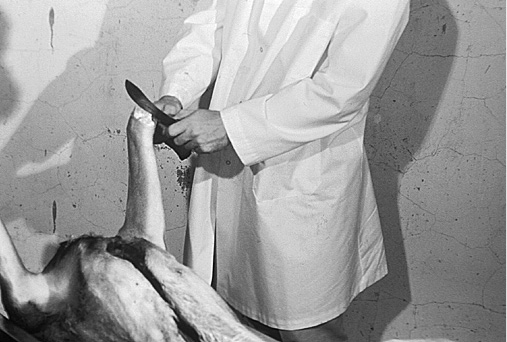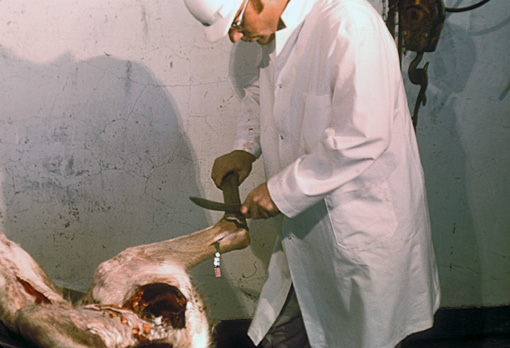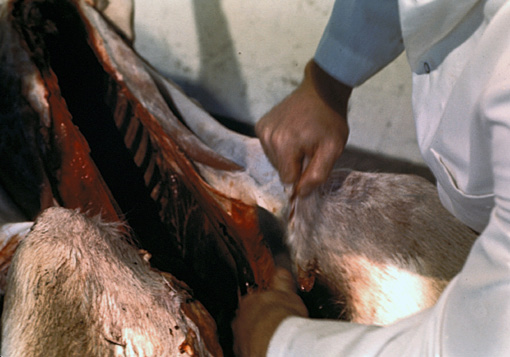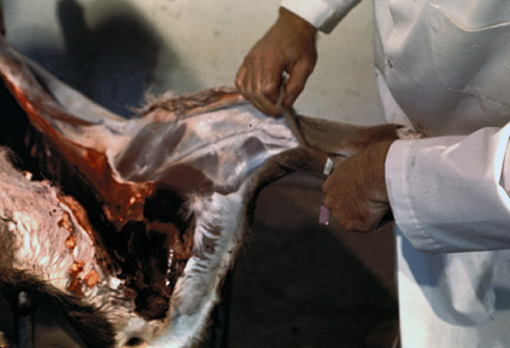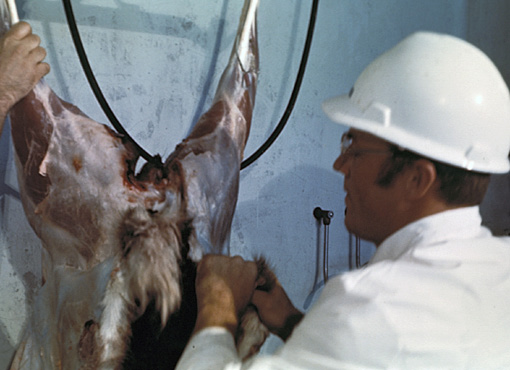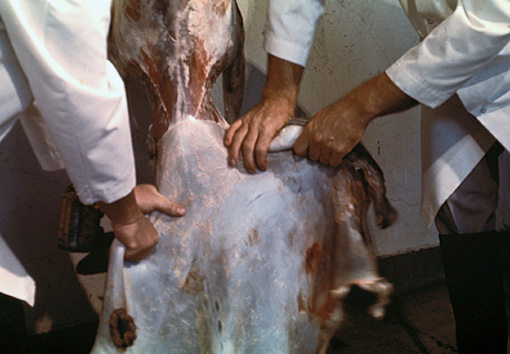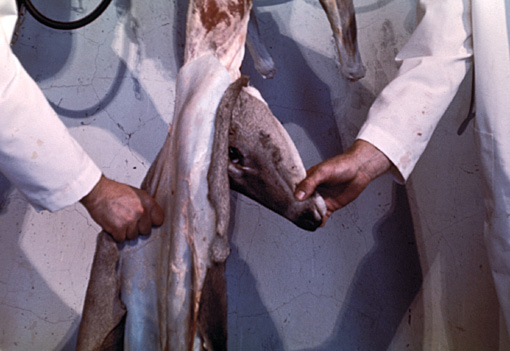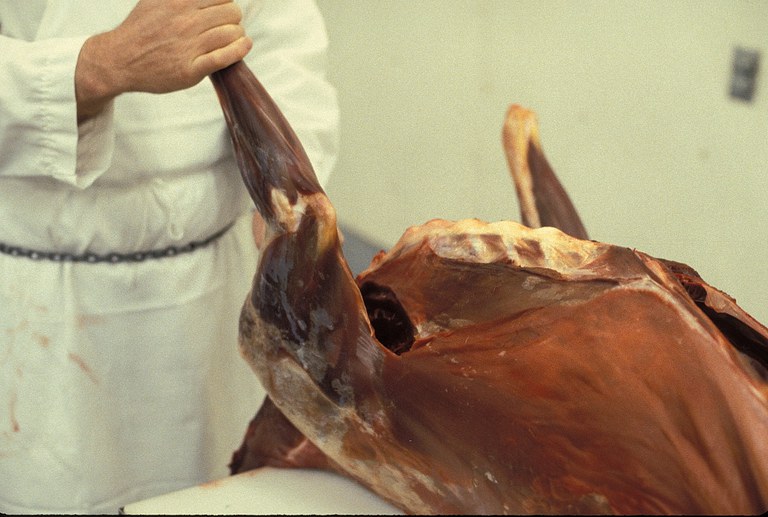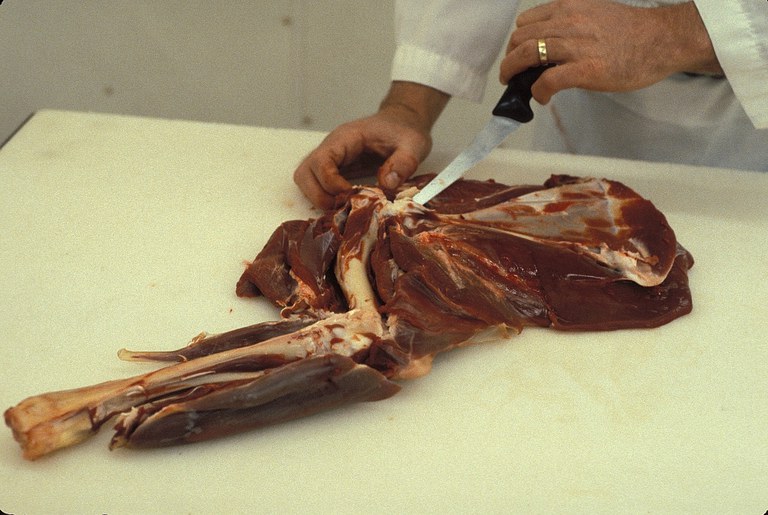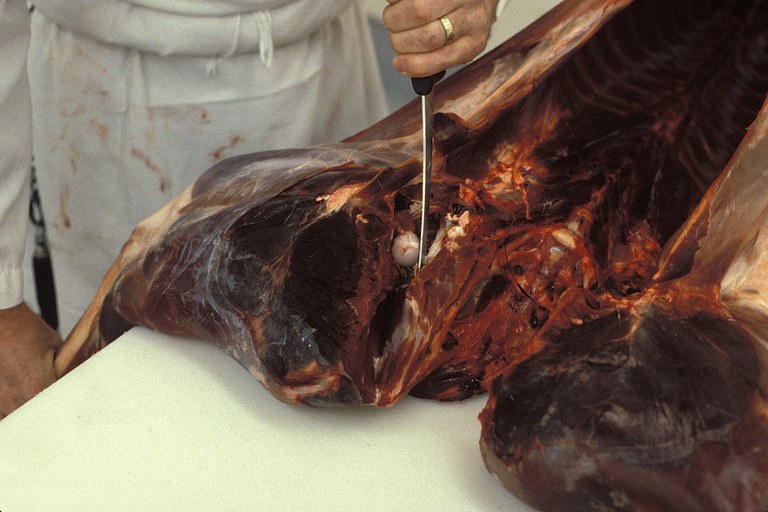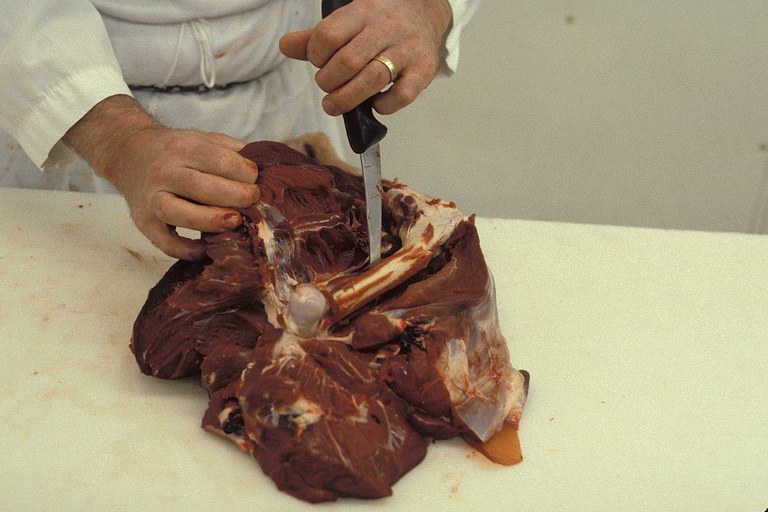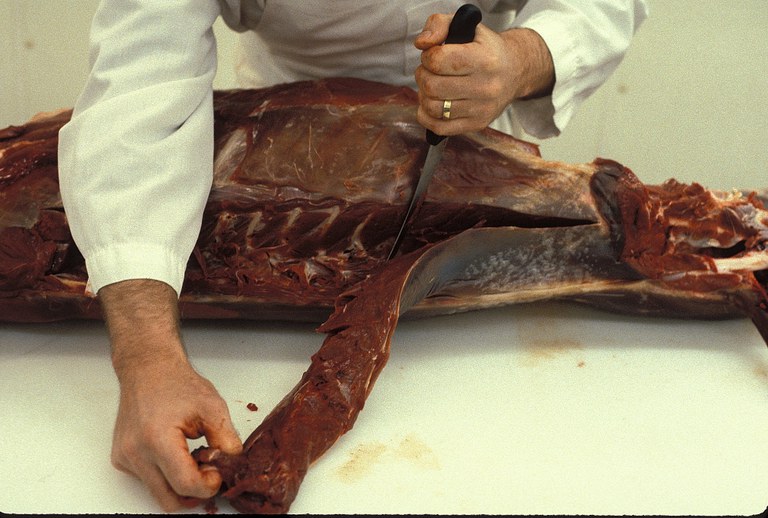Muscle boning a deer is a convenient way to take care of venison. It can be done on a kitchen table with a good sharp boning knife. It is not particularly difficult and has several advantages over conventional methods. It allows you to separate the meat into more selective pieces, taking up less freezer space, and is easier for the cook to handle and use. Furthermore, you will eliminate the spinal cord and lymph nodes, which is material that might be associated with Chronic Wasting Disease.
To begin, lay the carcass on the table. Start by removing the shoulder. Cut between the chest and front leg and follow along the neck line beneath the shoulder blade (Figure 3).
Figure 3. Removing shoulder.
Finally, remove the shoulder at the top of the withers (Figure 4).
Figure 4. Removing shoulder.
The shank is trimmed out for venison burger or sausage. The blade bone and arm bones are removed by separating the meat away from these bones (Figure 5). Then, the flesh is rolled and tied together with a string to make a boneless shoulder roast.
Figure 5. Boning the shoulder.
Next, remove the hind leg by following behind and adjacent to the pelvic (hip) bone and cutting the leg bone away from the hip joint (Figure 6). Continue boning out the hind leg by following along the shank and extending the cut up to the leg bone (Figure 7).
Figure 6. Removing hind leg from carcass.
Figure 7. Boning out hind leg.
Next, cut from the knee cap along the front muscle to where the leg bone was attached to the pelvic bone. Remove the leg bone and you are left with the boneless leg consisting of the sirtip, outside leg and inside leg. These pieces can be separated along their natural seams and thus be used as roast, jerky or sliced into steaks.
Remove the loin by cutting along the ribs from the front to the rear of the carcass (Figure 8).
Figure 8. Removing loin.
Score along the vertical spine of the back line and then remove the loin by cutting and peeling it loose from the groove between the ribs and backbone (Figure 9).
Figure 9. Removing loin.
After you have stripped out the loins, pull off the excess fat and cut into boneless loin chops. The tenderloin muscle is on the inside of the cavity. It can be stripped away from the backbone as described. Sometimes the chops from the loin and tenderloin are quite small; then one can butterfly them to make the steaks larger in diameter. A butterfly steak is two steaks lying side by side and connected by the same tissue at one edge (Figure 10). The remainder of the unsoiled meat on the rib, flank and neck and/or skeleton can be trimmed off and used for sausage trimmings or ground venison. You may find it easier to remove the shoulder, leg and loin from a hanging carcass and then finish the process as previously described.
Figure 10. Cutting butterfly steak.


